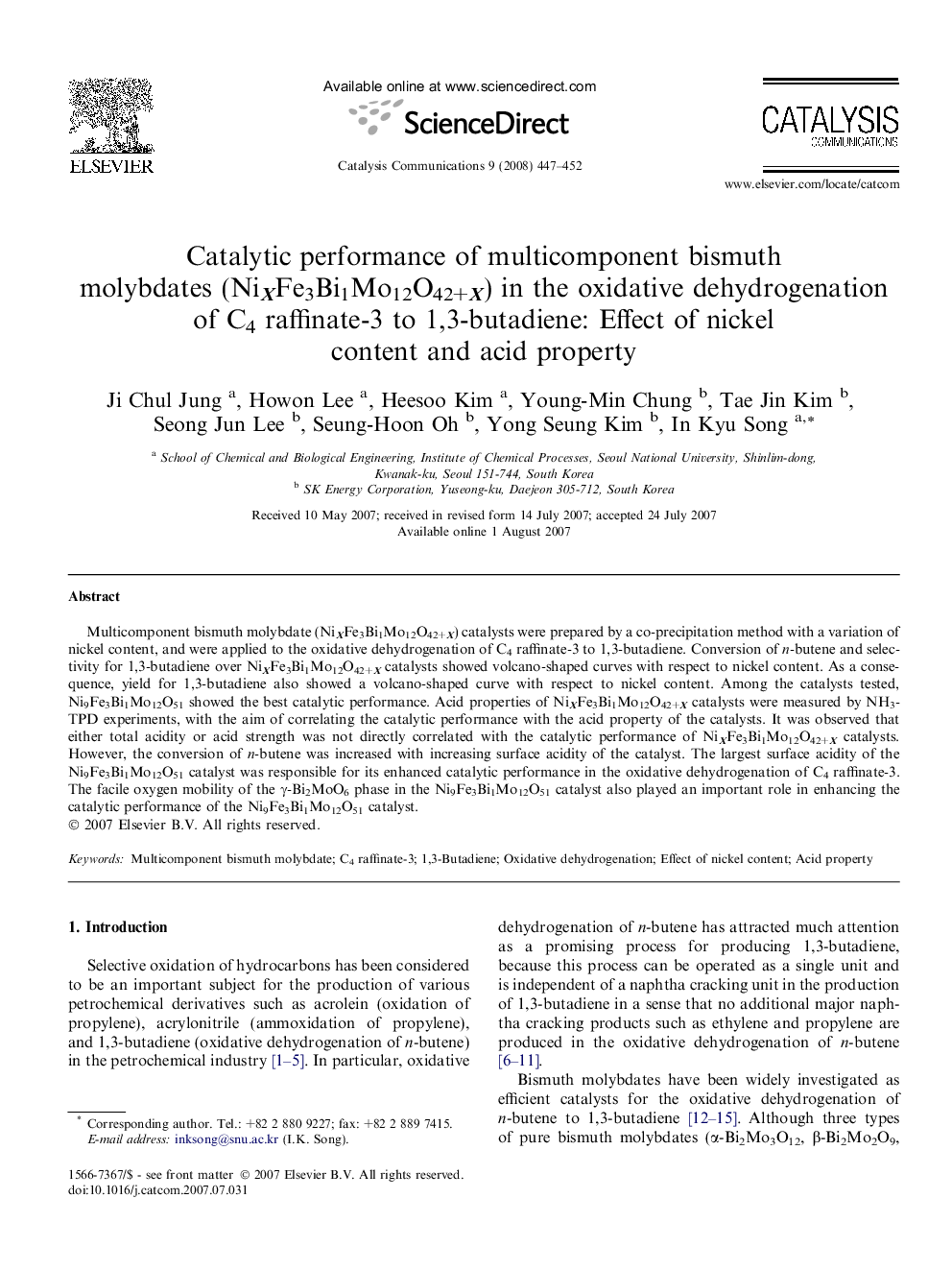| Article ID | Journal | Published Year | Pages | File Type |
|---|---|---|---|---|
| 52076 | Catalysis Communications | 2008 | 6 Pages |
Multicomponent bismuth molybdate (NiXFe3Bi1Mo12O42+X) catalysts were prepared by a co-precipitation method with a variation of nickel content, and were applied to the oxidative dehydrogenation of C4 raffinate-3 to 1,3-butadiene. Conversion of n-butene and selectivity for 1,3-butadiene over NiXFe3Bi1Mo12O42+X catalysts showed volcano-shaped curves with respect to nickel content. As a consequence, yield for 1,3-butadiene also showed a volcano-shaped curve with respect to nickel content. Among the catalysts tested, Ni9Fe3Bi1Mo12O51 showed the best catalytic performance. Acid properties of NiXFe3Bi1Mo12O42+X catalysts were measured by NH3-TPD experiments, with the aim of correlating the catalytic performance with the acid property of the catalysts. It was observed that either total acidity or acid strength was not directly correlated with the catalytic performance of NiXFe3Bi1Mo12O42+X catalysts. However, the conversion of n-butene was increased with increasing surface acidity of the catalyst. The largest surface acidity of the Ni9Fe3Bi1Mo12O51 catalyst was responsible for its enhanced catalytic performance in the oxidative dehydrogenation of C4 raffinate-3. The facile oxygen mobility of the γ-Bi2MoO6 phase in the Ni9Fe3Bi1Mo12O51 catalyst also played an important role in enhancing the catalytic performance of the Ni9Fe3Bi1Mo12O51 catalyst.
